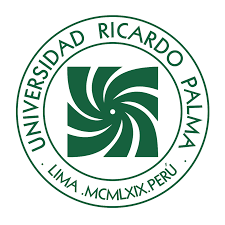Design and manufacture of prototype of facial shield with a respirator to avoid the spread of covid-19 (1st phase)
DOI:
https://doi.org/10.31381/perfiles_ingenieria.v20i15.3545Keywords:
Facial Shield, COVID-19Abstract
Throughout 2020, the world has suffered the ravages of a coronavirus disease pandemic, started in 2019 (COVID-19) and caused by the severe acute respiratory syndrome coronavirus 2 (SARS-CoV-2). In Peru, compulsory social isolation has generated great economic losses, which have resulted in job losses. The lack of adequate sanitary protection equipment that provides safe physical isolation conditions makes it difficult to return to a “normal state” of the productive apparatus. Based on this problem, the Center for Studies for Healthy Communities of the Ricardo Palma University, set out to design and manufacture a Prototype of a Face Shield with Respirator that prevents the spread of COVID-19. Based on previously published information and technologies available in our country, a practical solution was proposed to avoid the spread of the virus. The face shield has an electronicdigital system with proximity sensors (HC-SR04) to detect the approach within a radius of 1.5 meters, and MLX90614 temperature sensors to detect if the user has a temperature higher than 37.5 ° C. To view the user’s temperature data, the Face Shield has an OLED Module. All the information collected by the sensors is identified by the NodeMCU ESP8266 microcontroller, and the Arduino Nano V3 as the controller in charge of receiving the proximity sensors, communicated in a Serial (Tx / Rx) manner.
Downloads
References
“Pandemia de Covid-19”, Wikipedia, 2020. [En línea]. Disponible en: https://es.wikipedia.org/ wiki/Pandemia_de_enfermedad_por_coronavirus_de_2019-2020 [Accedido: 28-dic-2020].
“Síndrome respiratorio agudo grave”, Wikipedia, 2020. [En línea]. Disponible en: https:// es.wikipedia.org/wiki/S%C3%ADndrome_respiratorio_agudo_grave [Accedido: 28-dic-2020].
C. Merino (2020)
“¿Cuánto y cómo permanece el coronavirus en el aire?: el video que muestra el riesgo de una simple tos”, La Sexta, 2020. [En línea]. Disponible en: https://www.lasexta.com/programas/al-rojovivo/noticias/cuanto-y-como-permanece-el-coronavirus-en-el-aire-el-estudio-que-advierte-de-ladistancia-a-mantener-al-hacer-deporte_202004105e907141a8aed2000124f5a5.html [Accedido: 28-dic-2020]
E. Arrieta, “El hombre es un ser social por naturaleza”, Cultura genial, 2020. [En línea]. Disponible en: https://www.culturagenial.com/es/el-hombre-es-un-ser-social-por-naturaleza/ [Accedido: 28-dic-2020].
“Víctor Zamora: ‘Un grupo va a morir en el hospital; otro, en la calle, en albergues o en sus casas’”, Perú21, 2020. [En línea]. Disponible en: https://peru21.pe/peru/coronavirus-peru-ministro-de-salud-se-creara-un-comando-humanitario-de-levantamiento-de-cadaveres-covid-19-estado-de-emergencia-toque-de-queda-aislamiento-social-obligatorio-minsa-noticia/ [Accedido: 28-dic-2020]
Downloads
Published
How to Cite
Issue
Section
License
Copyright (c) 2020 Perfiles de Ingeniería

This work is licensed under a Creative Commons Attribution 4.0 International License.
In the event that the manuscript is approved for its next publication, the authors retain the copyright and assign to the journal the right of publication, edition, reproduction, distribution, exhibition and communication in the country of origin, as well as in the abroad, through print and electronic media in different databases. Therefore, it is established that after the publication of the articles, the authors may make other types of independent or additional agreements for the non-exclusive dissemination of the version of the article published in this journal (publication in books or institutional repositories), provided that it is explicitly indicated that the work has been published for the first time in this journal.
To record this procedure, the author must complete the following forms:

1.png)





